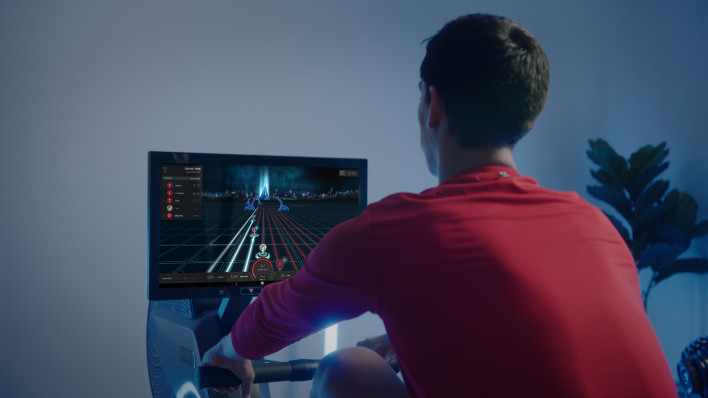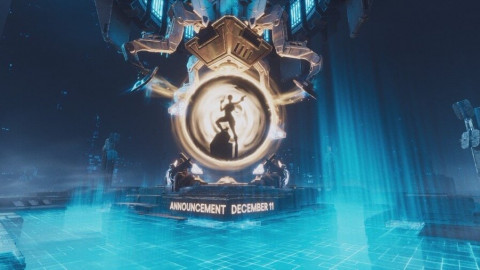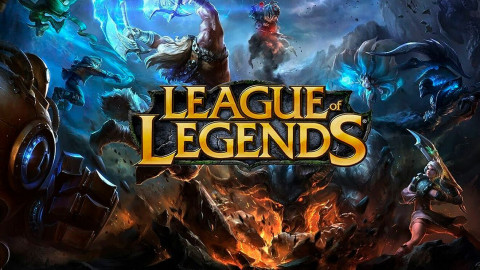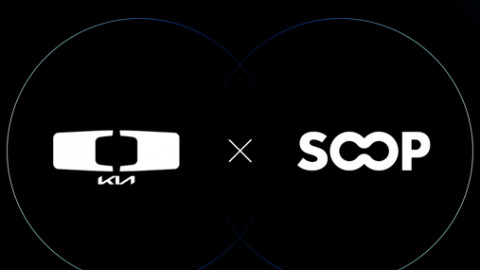
Decades ago, gaming and fitness may have seemed at opposite ends of the spectrum, with cliched expectations of basement dwellers and protein-powder-slamming jocks. But once you move past the stereotypes, it becomes quite obvious how similar gaming and fitness are. Both excel in providing a community that you can speak on shared experiences with.
Stuck in a boss or looking to improve your push-up form? There’s someone out there who has had similar difficulty and is willing to help you. They can also drive you to improve yourself through competition, aiming for a better time in a half-marathon or across the Green Hill Zone.
As part of both the gaming and fitness communities, Aviron CEO Andy Hoang created the Aviron Rower; a machine that could deliver a gamified workout and that essential sense of connectivity and competition that make gaming and visiting the gym so rewarding. Alongside CMO Inessa Karlinsky, Andy sat down with us to talk about his gamer beginnings, their goals in delivering a HIIT (high-intensity interval training) product, and how exercise can improve your K/D/A.
---
Since you created a fitness product that includes gaming it’s a fair assumption that you were a gamer at some point.
Andy Hoang: I've been gaming since a young age. My first memories are probably playing Mike Tyson’s Punch Out on the old-school Nintendo. Over the years, I moved from consoles to the PC. In high school, I took Counter-Strike 1.6 very seriously and played religiously for hours every day. I competed in Counter-Strike CAL tournaments in high school as well. In university we would have LAN and Halo parties in the dorms… and Starcraft competitions. And would travel to other universities to compete in Super Smash Bros tournaments.
The last real obsession I had was League of Legends in my later university years. I put in so many hours—I was seeing the sun go down and then come up most nights. My two characters at the time were Mordekaiser and Gangplank, but then he got nerfed. I’m not sure if those guys are still around.
Totally, Gangplank is still very much in the meta!
AH: Something about that game just drew me in more, I think it's the social and the competitive aspect, Not only are you playing against people, you're playing with people in your own team. And there's so much customizability in terms of builds; there's just so many layers. But at the same time, it was so easy that anyone could, you know, pick it up in a day. It was just such a life-changing game.
How did your favorite games or gaming systems growing up influence the direction of the game development for Aviron?
AH: My favorite game is a sentimental favorite from the Sega Dreamcast days. The console was ahead of its time in my opinion and never did very well. I think I gravitate towards the “underdog” across a lot of areas. I distinctly remember spending hours playing in my room and the nostalgia of those memories had and continue to have a huge influence on the direction I took with Aviron games.
To me, gaming was always better with friends and I was drawn to games where I could compete
against or work along someone else. With every Aviron game, you have the choice of playing on your own, competing against other people (or the AI) or working alongside others towards a shared goal. Whether you're being chased by zombies in “Last Hope” or shooting insects in an enchanted forest in “Bug Blaster (two of my faves).
Great games have stories and that’s why you play them. It’s not because you want to click the mouse really fast. All the games on the Aviron machine include an animated intro that brings the story to life before you start to play and then you’re in that mindset and in that world. That’s what makes gaming so fun — you’re someone else somewhere else.

So how are you focusing that immersion and experience from gaming into fitness?
AH: When we talk about fitness, we never talk about the journey, we talk about the end results. But with experiences, you focus on the process. Like when you talk about playing Counter-Strike, you talk about how many headshots you had or your killstreak. That's kind of the element we want to bring into fitness. We want people to talk about their high scores, or how many levels they were able to beat before they lost a life, or different elements in the game.
So I think that's what gaming is gonna do for fitness; make the workout experience memorable versus just making it about the end result of losing weight or gaining muscle. We have a tight-knit Facebook community of users that do just that — they post about their workouts — and they’re sharing not only what workout they finished, but the finer points of their game or race.
Who is Aviron for?
AH: Aviron is for anyone who finds it difficult to get motivated and maintain a consistent workout regimen because they have always found working out tedious and boring. It’s simple for me — I wanted to create a product to “end boring workouts." It’s not a carefully crafted line that a marketing agency came up with, it’s a daily reminder to me and my team of the initial goal we set out to accomplish.
We don't actually go after the hardcore gamer, our games are very intuitive. They're not complex in the sense that you would need to have micro and macro skills to play them. You're essentially rowing, so there are only so many things that you can do. So our goal is to make it fun for everyone, versus trying to build games for the hardcore group.
For esports athletes, it’s important to have both a healthy body and mind. How do you feel that the Aviron Rower pairs the two?
AH: I believe in minimizing internal conflict. What I mean is minimizing the internal dialogue of decision-making. Working out is one of those examples — telling yourself you will work out tomorrow and then spending tomorrow negotiating with yourself on when to go, how to start, what you’ll reward yourself with. All of this is internal conflict and wasted energy.
If you enjoy and are excited to do something that’s good for you that eliminates the conflict.
Instead of someone saying “ugh I gotta gym today” they’re going to say I can't wait to see if I can beat my high score or race “Jack” again. I think especially if you have a competitive mentality and enjoy gaming this will resonate - one of our customers is an avid gamer who got really into our Row Breaker game (inspired by the old school Brick Breaker) and she beat all 6 levels in the span of a couple of days. We had to go back and develop 4 more levels because she was so into the game and so disappointed she had already beat it.
Was there an existing product on the market that inspired you to bring fitness and gaming together? / How did you look to differentiate yourself in the fitness market?
AH: There are no products that bring fitness and gaming together on an equal playing field, the way that I feel Aviron has. There are gaming systems that incorporate some element of fitness and there are fitness products that incorporate elements of gamification.
We developed Aviron in a way that if you had to use the machine without the screen you would have a really solid workout and if you could play the games without the rowing machine you would still be interested in playing and would enjoy the games.
As a tech guy, what feature were you most excited to bring to the realm of fitness?
AH: We brought forward electronic resistance that is automatically controlled by the game. Electronic resistance is common in modern fitness equipment but it’s controlled by you, the user. In our game “Last Hope,” you’re being chased by zombies and you go through areas of “fog," during these intervals the resistance will automatically increase the difficulty of your workout.
The Aviron boasts six workout categories, including Pros Vs Joes where the user can race against pro athletes. Who are some of the people users can expect to race against?
AH: That’s actually a great question. People assume our races are against professional and Olympic rowers — and there are some of those — but the idea was just for the hell of it why not race against some athletes.
How strong and fast are they? Martial artists like Nalae Yang, Olympic snowboarder Katie Tsuyuki, MMA fighter Sabir Bagautdinov, Pro Alpine Skier Karl Kuss, are just a few that come to mind. Again, if you’re competitive this is likely where you’ll start and even though you might get your ass kicked these are also the programs you’ll come back to as you improve to gauge your progress.
The scale can only go so far and not everyone’s fitness goals revolve around weight loss so this is also a great way to see where you’re at in terms of overall fitness and strength.

Gamers consume a lot of content, and are always on the lookout for variety. How does Aviron keep its programs fresh, and avoid them feeling too repetitive?
AH: People love to scroll! It’s so ingrained in our daily behavior, the need for fresh content is ultimately endless and we plan to keep up. Currently, we release a software update each month with software and UX improvements as well as new programs.
Game updates are currently less frequent because they are animated and engineered from scratch and require a longer development cycle but we are in the process of doubling our engineering team to increase the frequency of game drops.
Would Aviron ever be interested in opening up their system for people to develop for?
AH: We get asked that all the time. We're using the Unity game engine, and the great thing about Unity is that it’s open. So yeah, the idea is, if we want to grow as a company, the best way to grow is to keep it open to have other people build into our ecosystem. Because even if we had 100 engineers, it's not going to be enough. I would rather build a Steam-type of system, where everyone can just tap in and build their own games using our platform that would be amazing.
Speaking of variety, do your programs support any off-the-rower exercises?
AH: Yes! Rowing engages a wide variety of muscles but our goal was always to provide a full-body workout - emphasis on the “full.” We have hundreds of content options and those include Guided Strength Programs designed by professional athletes and trainers.
These programs will have you using the bar to do bicep curls and back rows, for example. The Aviron Rowing Machine is equipped with best-in-class dual magnetic and air resistance that will have you pulling 100+lbs at the highest resistance levels. Allowing for true strength training and the type of exercise you wouldn’t think of when you think about rowing.
There’s also a little animated character that guides you through workouts that are independent of machine-like squats, lunges, and push-ups. So if the machine were to direct you to do “back rows” and you’re not sure what that is it won’t be a problem.
The content library is always growing so we plan to expand from hundreds to thousands of programs in the near future.
Inessa Karlinsky: We're a rowing-based company now, but ultimately, we're “connected fitness entertainment.” The content is going to continue to be key, and it's going to continue to be our main differentiator. So it's very much, “the sky's the limit.”
The funding is really going to open doors for us in terms of growing this to be a really robust platform, and hopefully one day people just know the name “Aviron” is associated directly with fitness, entertainment, and gaming: the Aviron experience.
What sort of connectivity have you seen Aviron really succeeding at so far?
AH: We have a great Facebook community, and they live stream races every week. It’s great. But if you go to any other Facebook page for a fitness product, you take a picture of your end result in your leaderboard and how many calories you burn. In our group, they're sharing the journey of the race versus the end result.
IK: On other platforms, you can't go live. We do have competitors where they're racing against pre-recorded races, but for us people are actually racing in real-time. They see each other's
comments, they see each other's profile pictures, and they see each other coming close and switching spots if they're racing.
The videos, the Facebook Live, everyone's talking about it, it's pretty crazy. We never thought the community would be what it is; the members really took it on themselves. They loved the product and the experience, and they've made it what it is. They're definitely encouraging us to build out the product more in that direction to get more of that social interaction. So definitely, I think Andy's instincts were there when starting to build and develop in that same direction.
Livestreaming is a huge part of both esports and gaming culture. Seeing your communities latch onto that must be really exciting.
AH: Yeah, we've always thought about it. And that's why we built our rower with a built-in camera and microphone, As a small startup, it's hard to kind of do everything at one time, but the goal is to have an ecosystem where you're on this platform, and you can comment on people's performance. You can share achievements with them. You can be live in a race and see each other. You can schedule events. That's our dream one day; Just gonna take time to get there.

Do you have any examples of this interconnectivity that stand out?
AH: One guy who is leading part of the Facebook group, straight out said during a live stream, “I never thought I'd want to work out with other people. Like I bought this product, not thinking that I was gonna work out with other people.” But now it's definitely like, the most exciting part of the product is doing the workouts with other people.
We can imagine that the interconnectivity and community aspects are really impactful during COVID times as well.
IK: We launched during COVID, and I think that's probably one of the reasons that community took off. People have been very open and raw in the community about their journey, about their progress, about doing well or not well. It definitely started with a few genuine people and snowballed. They see a lot of support and positivity.
Honestly, I'd never thought about it, but the pandemic probably has something to do with that. People are alone; a lot are just with their family. So this definitely gives them a social outlet, and it's all positivity. If anyone's toxic at all, we nix it from the group, because it’s just like a very genuine positive platform.
---
If you are interested in creating your own rowing fitness plans. You can try out these rowing machine workout plans for beginners.
Thank you again to Andy and Inessa for chatting with us regarding the future of Aviron. How have you brought fitness into your life? Do you find yourself more effective in a competitive environment? Let us know on social media by tagging @InvenGlobal.
Sort by:
Comments :0










